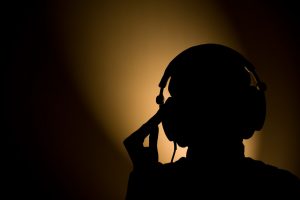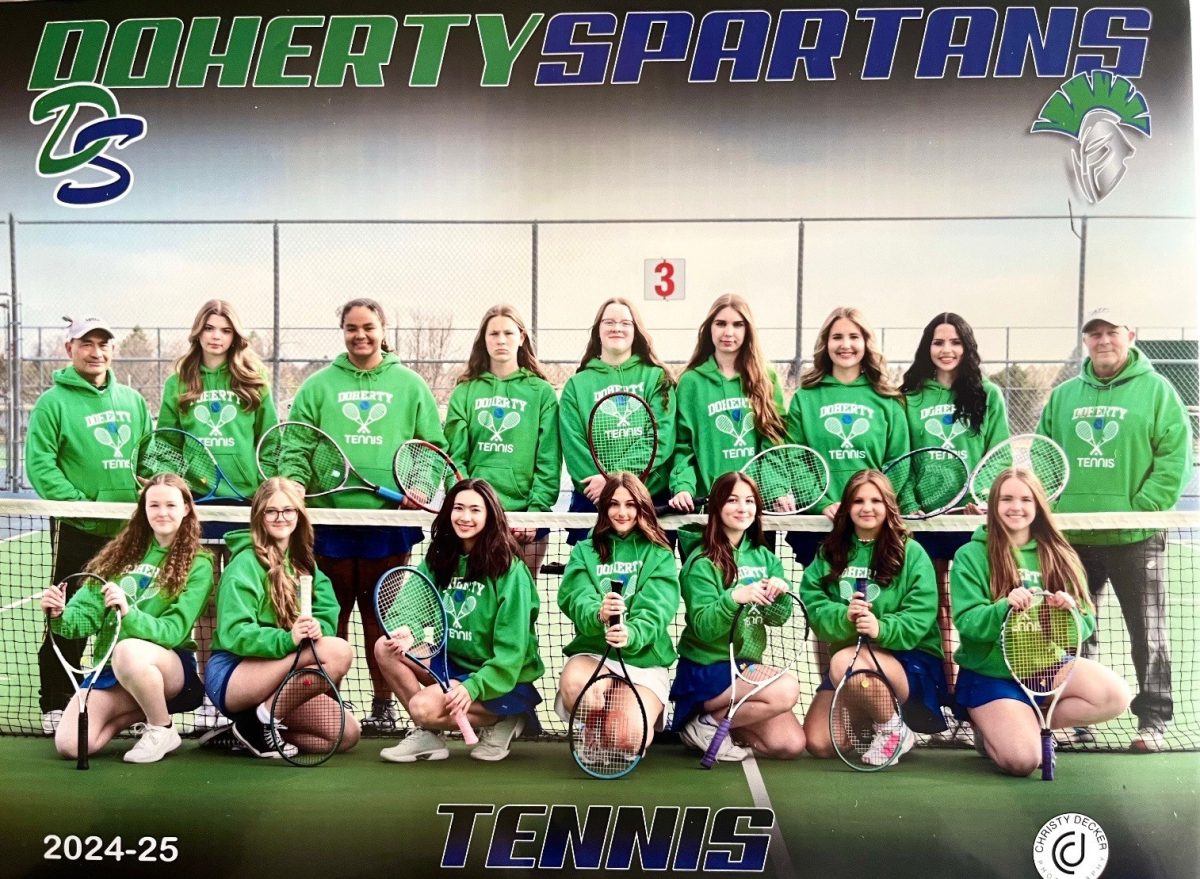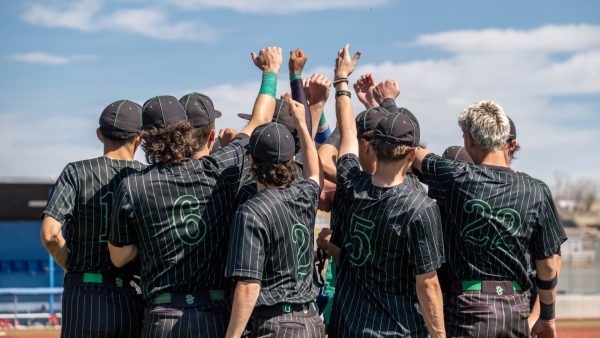We Have To Start Turning Our Cameras On
Pushing ourselves out of our comfort zone makes online school a better experience for all parties.
February 4, 2021
With the anniversary of our online school endeavor rapidly approaching this Spring semester, students and teachers alike adapted to the “new normal” of learning in a pandemic. Doherty High School adopted an asynchronous hybrid model where—COVID conditions allowing—students attend in-person classes on a block schedule two days a week and join classes remotely the other two days. Alternatively, students may opt to attend all classes virtually from home. Although we’ve grown accustomed to spending at least half the week taking classes remotely, the new environment we learn in has posed its own challenges.
Dispute between efforts to replicate normalcy and preserving mental-emotional wellness while social distancing culminates in one button: the camera icon at the top of your class call. While both are crucial for maintaining good mental health, we all have to be willing to compromise and be receptive to the needs of others to make online school as cohesive as possible— even if it means making ourselves vulnerable.
I’ll be the first to admit that WebEx classes are much more comfortable when I’m splayed out on the couch in sweats, shoveling Lucky Charms into my mouth. But I also know that wouldn’t be fair to myself, my teachers, or other kids in my classes who show up every day and put themselves out there by turning their cameras on.
This past year has been rough on all of us in one way or another, and feeling unmotivated is something we can all relate to. Ms. Classen, AP Seminar, AP Research, and Capstone teacher at Doherty, reflected on her struggles with online classes: “I recognize that feeling of ‘Oh my god, I hate teaching this year. I hate teaching online.’ And I stepped back and had to start questioning myself, [asking,] ‘Why is that? I love teaching.’”
Classen notes the stark difference between a regular classroom atmosphere and that of an online call, saying, “There’s this thing that happens in the classroom when you’re a teacher, there’s this buzz, and it’s almost palpable. You can feel it. It’s energy…And what I identified as really missing this year was that energy. [Online,] I showed up every day and I felt like I was a little monkey doing this dance trying to get a reaction, and I got no reaction whatsoever.”
Many classmates have identified feeling that shift as well. Junior student at Doherty High School, Angelina Hanon, noted that being seen on a screen is harder than showing up in-person, saying, “I have a cat who tends to cause a lot of trouble, so I don’t want to distract others when I get up to stop him. And the lighting in my room isn’t the best, so I don’t feel confident having [my camera on]. I don’t want it to affect my work.”
That face-to-face connection is one of the biggest aspects of school that we’ve lost.
Kinesics and communication expert, Ray Birdwhistell, estimates that 60-70% of communication is reliant on nonverbal cues like body language, facial expressions, eye contact, and hand gestures. Feeling connected to others plays a crucial role in staying engaged in classes as students, as well as gauging understanding for teachers.
Srta. Hogue, a Spanish teacher at Doherty High School, noted, “Part of being a teacher is [wanting] to get to know your students and building relationships with them because it helps the learning. But all those same issues go into learning too; if I’m going too fast or people are getting lost and I don’t know [because] I don’t hear from students. Right now, a lot of the time I’m in the dark about how students are actually doing, and I don’t have that real-time [interaction] of students in front of me to see where they are in an activity.”
Ms. Montague, an AP Language teacher at Doherty High School, shared that sentiment, saying, “This is just my own personal experience, but I know a lot of teachers agree with me, that they wish cameras were on just so we can read your eyes and faces…Even if I only have 5 or 6 of you, it still helps me get a feel for how you guys at home are doing. It’s just the personal touch that you need in teaching.”
Turning on our cameras makes classes more comfortable for our classmates and teachers, which ultimately makes online lectures flow better and much easier to pay attention to. A research study on teachers’ use of non-verbal communication and cues found that certain behaviors like frequent eye-contact, being expressive, and being animated with hand gestures were proven effective at maintaining student involvement. We all have the same goal in mind: to get through classes as efficiently and painlessly as possible.
That said, no matter how much normalcy we do maintain, there are days where online school is just mentally draining. Deemed “Zoom fatigue,” (or in our case, WebEx fatigue) people across the nation report feelings of exhaustion after a few hours of sitting through conference calls. Paired with the widespread mental health epidemic, sometimes the last thing we feel like is being present and presentable for class.
“I’ve done a lot of research this year on reasons why our students are disengaging from their learning. We’re seeing much higher failure rates not only at our school but across the board. Across the country, failure rates are higher than they’ve ever been and suicide rates for students are increasing significantly. There are quite a few variables, but the big ones that stand out to me are the impacts of that social isolation. For those people who are very much like me—who feed off that energy transfer [of being in the classroom]— that’s very soul-crushing. It really impacts your emotional state,” said Ms. Classen.
No matter the circumstances, maintaining good mental health and advocating for ourselves is something we have to prioritize. There are going to be days where you don’t have it in you to get ready and turn on your camera, and that’s totally okay. We’ve all been there, and I strongly encourage you to take that liberty if you need to. At the end of the day, your well-being is the most important thing to teachers.
“When you see a whole row and nobody has their camera on—and I tell them every day that I really want to see their faces— and I have to take a step back and not allow myself to feel disrespected…This whole thing is hard for everyone. A lot of the time it’s easy to see things from our perspective and we don’t take a lot of time to step back and see wonder what someone else is struggling with. I think we need to talk about it. I think it needs to be a common point of discussion,” Classen agreed.
Srta. Hogue explained why she asks students to turn cameras on, and how she navigates those difficult days: “I made the decision just a couple weeks into school that I was going to ask students to have videos on. I can’t require it, obviously, but [it was] in the spirit of making classes feel a little more like a normal classroom. And students can send me a chat message if they’re having tech issues or if they’re having a bad day—I get students who tell me that sometimes. And I’m always okay with that, I’m not going to force that.”
Montague shared a similar outlook, saying, “If students’ cameras are on, I can definitely tell the mood. And then I can text [students] to check in with them when it looks like they’re sick, or bored, or tired, or anxious. It’s very important for gauging the social and emotional wellbeing of students”
The key is communication; teachers can’t know what circumstances you’re in or how you’re doing if you don’t let them know. How much you’re comfortable with disclosing is up to you, but the general consensus is that they need to know why your camera isn’t on to be receptive to your situation.
Mutual understanding from teachers then allows for those days where you need a break. Angelina described her ideal camera-policy, saying “I like the way most teachers are going about it, [with] encouragement to turn it on and acceptance that some don’t always feel comfortable with that.”
It’s a balance. If we try our best to show up when we feel up to it, we act as a buffer for those who are having a rough time. Conversely, when we aren’t feeling so good, others have their camera on and cover for us. Either way, teachers have students to interact with and teach to, which makes classes better for everyone. But it has to be a collective effort to work. It’s the narrative we’ve all grown accustomed to in a regular year at Doherty High School: “We Before Me.”






Mrs. Landis • Mar 5, 2021 at 8:43 am
You nailed this topic! And your final conclusion of the We Before Me—sometimes you take it for the team with a camera on, knowing that another in the class will step up on one of your hard days is a beautiful mutual scenario that could really create a stronger, more connected learning environment. Thanks for caring about this and doing the research. I’m grateful that many more masked faces will be connected in the same space very soon….
Darius Crisler • Feb 5, 2021 at 4:46 pm
I agree with both great job well done to the both of you 🙂
Darius Crisler • Feb 5, 2021 at 4:45 pm
I agree with both great jobs you two :).